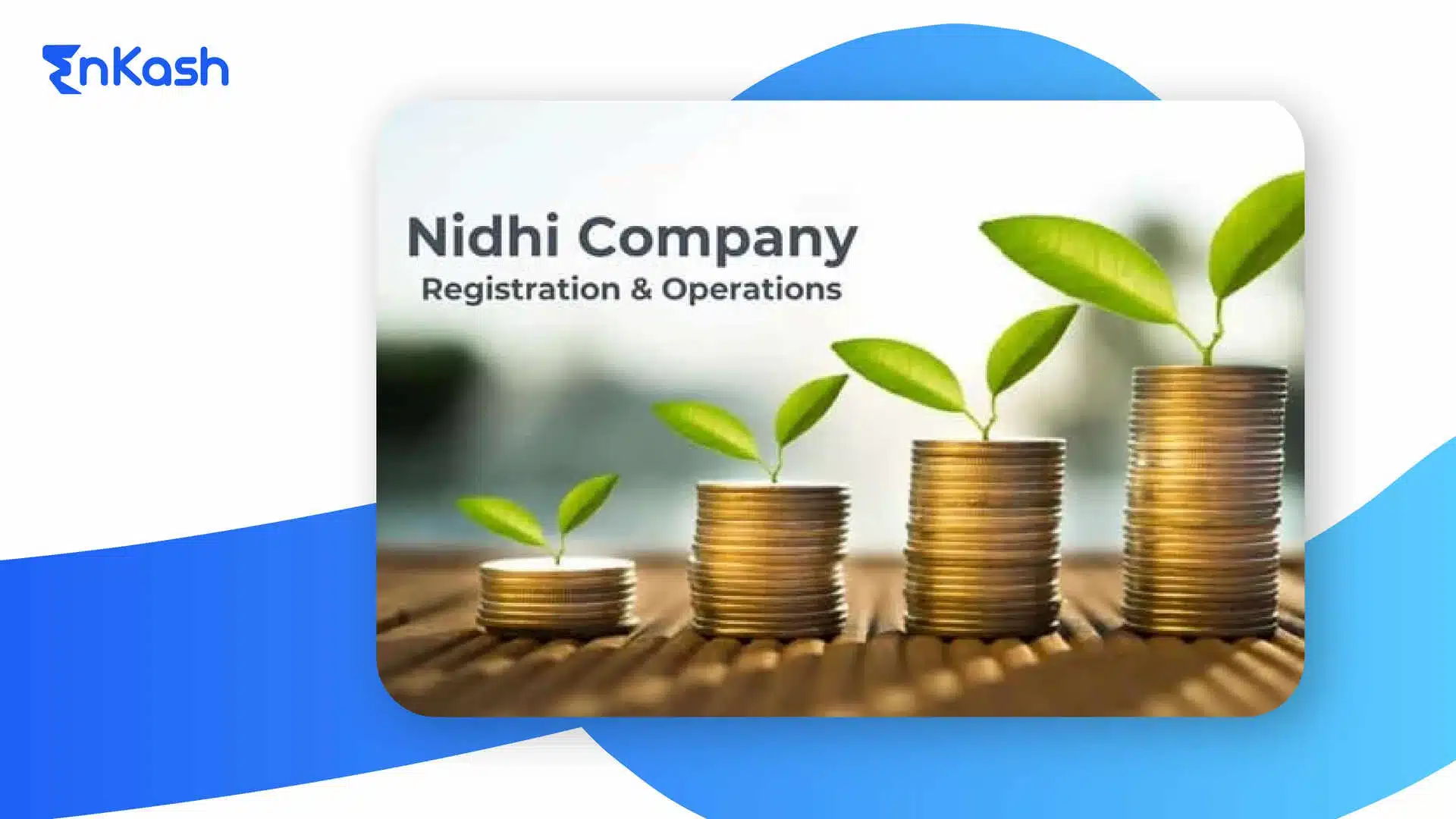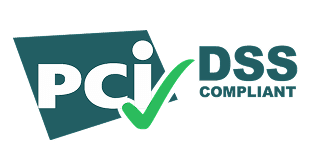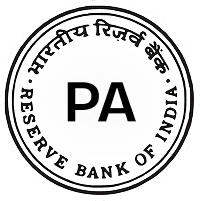Introduction
You do not need collateral to run a business. But you are often expected to have it to fund one.
Even if operations are solid, vendors are paid, invoices are being processed, and cash flow is under control, the moment you ask for a loan, the conversation shifts to security. And if you do not have any to offer, it usually ends there. Not because the business isn’t performing. Just because there’s nothing to mortgage.
That approach is slowly shifting. Some lenders are beginning to look beyond hard assets. They’re studying how a business earns, spends, and complies with GST returns, account activity, and bureau data, not just what it owns. Loans without collateral aren’t based on promises or projections. They rely on patterns. If the numbers make sense, some lenders are willing to move forward with no property papers involved.
The process still requires strong documentation and clean numbers. The difference is, lenders are willing to consider performance in place of security.
What is a No Collateral Business Loan?
A no-collateral business loan is exactly what it sounds like: a loan offered to a business without requiring any security or pledged assets.
In more traditional lending, banks expect you to offer something they can recover in case the loan goes unpaid. That might be property, equipment, fixed deposits, or any physical or financial asset that holds value. Without it, you are usually not eligible for credit, or you are offered very little.
A collateral-free loan is different. Instead of asking what you can mortgage, the lender studies how your business performs. If the inflows are consistent, if your compliance is in place, and if past repayments (if any) show discipline, the loan is assessed and priced accordingly.
This type of loan is sometimes called:
- Unsecured business loan
- Loan without security
- Collateral-free MSME loan
- Or even just a working capital loan, depending on the lender’s terminology
But the core idea is the same: no asset is pledged.
Lenders use alternative signals to judge eligibility, like:
- Average monthly revenue
- Bank statement history
- GST return filings
- Existing EMIs, if any
- Credit score and repayment history
In short, they’re lending based on performance, not possession.
This model is being used by NBFCs, digital lending platforms, fintechs, and even some private banks. It is not new, but it has become more structured and widely available over the last few years, especially with better access to real-time financial data.
It is important to understand that this isn’t “easier” money. In many cases, unsecured loans are priced higher than secured ones. The tenures are often shorter, and the loan amounts can be limited. But for businesses that need capital without tying up assets and are confident in managing repayments, it can be a workable path.
Difference Between a Standard Loan and a Collateral-Free Loan
The basic difference is: a standard business loan is secured, and a collateral-free loan isn’t.
But that one difference changes how everything else works, from eligibility to processing to repayment terms.
1. Security Requirement
- Standard Loan: You need to pledge an asset property, machinery, FD, inventory, or anything the lender accepts as collateral.
- Collateral-Free Loan: No security is required. The lender evaluates your financials, credit history, and business performance instead.
2. Loan Amount
- Standard Loan: You can usually borrow a larger amount since the loan is backed by collateral. The value of the asset partly decides how much you are eligible for.
- Collateral-Free Loan: The loan amount is capped based on your turnover, account health, and repayment capacity. Lenders tend to be more conservative.
3. Processing Time
- Standard Loan: More documentation, physical asset verification, and legal checks, all of which can stretch timelines.
- Collateral-Free Loan: Quicker processing, especially if you are applying digitally. Most lenders pull your bank and GST data directly, and approvals can happen in days.
4. Interest Rates
- Standard Loan: Usually lower, because the lender has some recovery cushion in case of default.
- Collateral-Free Loan: Slightly higher, since the risk to the lender is greater.
5. Documentation
- Standard Loan: Involves ownership documents for the asset, valuation reports, legal clearance, etc., in addition to standard KYC and financials.
- Collateral-Free Loan: Focus is on income proof, bank statements, GST returns, and past repayment behaviour. Much less paperwork overall.
6. Who It is For
- Standard Loan: Better suited for businesses that own assets and want access to larger amounts at better terms.
- Collateral-Free Loan: Makes more sense for businesses that are growing, running lean, or do not have anything to pledge but need quick access to working capital.
Types of Collateral-Free Loans
Not every loan without collateral works the same way. Some are built for day-to-day working capital. Others are meant for longer-term growth. And the structure depends on who is lending: a bank, NBFC, fintech, or even government-backed schemes.
The main types of collateral-free business loans you will come across in the Indian market:
1. Term Loans (Unsecured)
These are fixed-tenure loans with a lump sum disbursed upfront, repaid over time in EMIs.
- Tenure: Usually 12 to 60 months
- Use case: Expansion, new equipment, hiring, stock purchase
- Lenders: NBFCs, private banks, digital lending platforms
- Key point: Your financials and bureau history drive approval, not what you own.
2. Working Capital Loans
Designed to keep your operations running smoothly by providing short-term cash to bridge inflows and outflows
- Tenure: 6 to 24 months
- Use case: Paying suppliers, managing payroll, handling seasonal demand
- Lenders: Banks, NBFCs, fintechs
- Key point: Sanction limits are often based on GST and bank statement analysis.
3. Line of Credit (Overdraft-style)
Gives you access to a pre-approved limit, and you only pay interest on what you use.
- Tenure: Revolving credit, usually renewed annually
- Use case: Managing variable expenses without locking in a full loan
- Lenders: NBFCs, digital lenders, and some neo-banks in partnership with regulated NBFCs or banks
- Key point: Flexible, but requires financial discipline easy to overdraw and trigger high interest.
4. Invoice Financing (Bill Discounting)
Allows you to raise capital against unpaid invoices useful if customers pay on long credit cycles.
- Tenure: 30 to 120 days
- Use case: Converting receivables into upfront cash
- Lenders: Fintechs, invoice financing platforms, NBFCs
- Key point: Lenders assess your buyer’s creditworthiness along with yours.
5. MSME Loans under Government Schemes
Schemes like CGTMSE, PMMY (MUDRA), or Stand-Up India offer loans to eligible businesses without collateral.
- Tenure: Varies by scheme
- Use case: Set-up, growth, equipment, working capital
- Lenders: Public/private sector banks, SIDBI, registered NBFCs
- Key point: Collateral-free by design but documentation and eligibility filters apply.
6. Merchant Cash Advance (MCA)
For businesses with steady card swipes or online sales, this lets you borrow against future sales.
- Tenure: 3 to 12 months
- Use case: Inventory stocking, short-term liquidity
- Lenders: Fintech lenders, POS-based financing providers
- Key point: The daily repayment model is tied to sales volume, high cost, but fast and accessible.
7. Embedded Credit (Platform-Based Lending)
If you sell through e-commerce or aggregator platforms, you might get credit offers based on your transaction history.
Tenure: Short to medium-term
- Use case: Restocking, expansion, logistics
- Lenders: Tied to platforms (e.g., e-commerce, delivery, fintech APIs)
- Key point: No separate application credit is embedded in your platform relationship.
Each type serves a different need, whether you need to steady your cash flow or back a growth decision. What fits best depends on your current business priorities and cash flow patterns.
Eligibility for Collateral-Free Loan
Just because no collateral is needed doesn’t mean anyone qualifies. In fact, without security in hand, lenders look even closer at how your business runs.
So instead of looking at what you own, they look at how you operate. Cash flow, repayment discipline, and filing history are the basics that need to hold up.
These are the common checkpoints lenders use to decide if your business is eligible for unsecured financing:
1. Business Vintage
Most lenders prefer businesses that have been operational for at least 12–24 months. The longer the track record, the easier it is to assess consistency.
2. Monthly Turnover
There is usually a minimum turnover requirement, often around ₹1–5 lakhs/month, depending on the lender. Digital lenders might be more flexible if your transactions are well-documented.
3. Bank Statement History
Lenders will review your last 6–12 months of bank statements to check inflows, outflows, average balances, and bounce patterns. Healthy, predictable activity matters more than high spikes.
4. GST Returns
Filing GST consistently is often a key filter. It shows not just compliance, but also real revenue figures. Many lenders directly integrate with GST systems to verify data.
5. Credit Score (CIBIL or Equivalent)
Most lenders prefer a CIBIL score of 700 or higher for unsecured business loans. That said, some fintech lenders and smaller NBFCs may consider applications with scores in the 650–700 range, especially if your bank statements and GST returns show steady cash flow and responsible financial behaviour.
6. Existing Loan Repayment Behaviour
If you have taken a loan before, business or personal, your repayment behaviour carries weight. Missed EMIs or overdue accounts reduce your chances significantly.
7. Legal and Compliance Standing
Basic KYC must be in place:
- PAN (business and personal, if applicable)
- Aadhaar
- Business registration documents
- Udyam (MSME) registration (where required)
Pending litigations, unresolved defaults, or mismatches in documents can be red flags.
8. Business Type and Sector
Some lenders avoid high-risk or unregulated sectors. Others might prefer service-based businesses with steady client relationships. Sector appetite varies across lenders.
Benefits of Collateral-Free Loans
The real value of a collateral-free loan isn’t just that it doesn’t need security; it is in how it fits the pace and structure of growing businesses. These loans are built for situations where time matters, paperwork needs to stay light, and flexibility is more useful than large sums.
Whether you are managing cash flow, covering supplier payments, or preparing for a seasonal uptick, a loan without collateral can be the faster, simpler route to staying on track.
Here’s what makes them especially useful in today’s business environment:
1. Asset-Light Access to Capital
You do not need to mortgage property, hand over FD receipts, or get guarantors involved. That makes it simpler especially for newer businesses or asset-light models like services or trading.
2. Faster Approval and Disbursal
With no property to verify or evaluate, loan processing tends to move quicker. Many fintech lenders disburse funds within 24–72 hours once the documents are checked.
3. Lower Entry Barrier for MSMEs
Many Indian MSMEs operate out of rented premises or lack fixed physical assets. Collateral-free loans widen access, giving more businesses a shot at formal credit.
4. Flexibility in Usage
Whether it is buying inventory, paying vendors, managing a seasonal dip, or upgrading systems, most lenders do not restrict how the money is used, as long as it is for business.
5. Builds Credit History
Regular, timely repayment of unsecured loans helps build your business’s credit profile, which can help you negotiate better terms or move to bigger-ticket loans later, provided your repayment history remains strong and financials support the scale-up.
6. Keeps Personal Assets Separate
When you avoid pledging personal property, it protects your family’s assets in case of business setbacks. This separation is especially useful for sole proprietors or partnerships.
7. Short-Term Financing Options
Collateral-free loans are ideal for working capital cycles, bridging short-term gaps, or funding time-sensitive growth. You do not have to lock in long tenures unless you want to.
Available Through Digital Channels
Most unsecured business loans today can be applied for completely online with document uploads, KYC, and verification done digitally. That saves time and keeps overheads low.
Collateral-free loans aren’t cheap capital interest rates can be higher, especially if the lender is taking on more risk. But for businesses that need quick, flexible access without tying up assets, they offer a strong financing option and, in many cases, the only viable one.
Things to Watch Out For
Collateral-free loans are built for speed and flexibility, but that doesn’t mean they’re risk-free. Businesses need to read the fine print, plan for repayment, and make sure they’re not overextending just because there’s no asset on the line.
Here are a few practical points to keep in mind before taking one:
- Interest rates may be higher
Unsecured loans usually carry more risk for the lender, which reflects in the pricing. Compare rates across platforms before deciding. - Some lenders may still ask for a personal guarantee
Even without physical collateral, many lenders require a personal guarantee from the proprietor or director. This puts personal credit at stake in case of a default. - Watch for hidden fees
Always check for processing fees, prepayment charges, or penalties for delayed payments. Some lenders recover costs through these add-ons. - Understand the repayment structure
Whether it is a fixed EMI or a daily deduction model (in the case of merchant loans), make sure it aligns with your cash flow cycle. Missing repayments affect your credit score and future eligibility. - Do not borrow more than you need
Quick approval shouldn’t lead to over-borrowing. Plan the use of funds and borrow what your business can comfortably repay.
Government Support and Policy Push
The Indian government has steadily increased its efforts to make unsecured business credit more accessible, especially for MSMEs that operate without large fixed assets.
Some notable support systems are in place:
- Udyam/MSME registration
Being formally registered as an MSME can improve your chances of getting unsecured loans and make you eligible for various subsidies and credit schemes. - Credit Guarantee Fund Trust for Micro and Small Enterprises (CGTMSE)
This scheme provides a credit guarantee to lenders, enabling them to offer collateral-free loans to eligible businesses. Coverage goes up to ₹2 crore, subject to the loan category and MSME segment. - MUDRA loans under PMMY
Micro Units Development and Refinance Agency (MUDRA) offers loans up to ₹10 lakh under different categories (Shishu, Kishore, Tarun) without asking for collateral, depending on the borrower’s business stage. - The Role of SIDBI
SIDBI works with banks and NBFCs to refinance MSME loans and supports schemes like Stand-Up India, often without the need for pledged assets.
Policy momentum is clearly in favour of improving access to unsecured credit, but the actual ease of getting a loan still depends on your financial documentation, digital visibility, and repayment history.
Conclusion
A loan without collateral isn’t a shortcut; it is a different way to access working capital based on performance instead of possession. If your business has predictable inflows, regular filings, and responsible financial habits, lenders are more willing than ever to work with you, even without asking for property papers.
Collateral-free loans can be fast, flexible, and efficient. But they also come with tighter tenures, higher interest rates, and closer scrutiny. The key is to use them with a clear repayment plan and only when there’s a business need, not just because they’re easy to access.
For growing businesses with limited financial resources, this type of financing can fill a crucial gap. However, like any financial decision, it is helpful to run the numbers, compare your options, and consult with a financial advisor before signing anything.
Read More: Business Finance.
FAQs
1. What is a collateral-free business loan?
It is a loan offered without requiring you to pledge any physical or financial assets. Approval is based on your business’s financial performance, banking activity, and credit history.
2. Who is eligible for a collateral-free loan?
Eligibility typically includes:
- Business vintage of 12–24 months
- Monthly turnover of ₹1–5 lakh+
- Clean bank statement history (6–12 months)
- GST compliance
- Credit score of 700+ (preferred)
3. What is the maximum amount I can borrow without collateral?
Loan amounts usually range between ₹50,000 and ₹50 lakh. Some lenders may offer higher amounts based on your business profile, turnover, and repayment capacity.
4. What interest rates should I expect?
Rates vary between 12% and 28% depending on lender type (NBFC, fintech, bank), risk profile, tenure, and loan amount. Digital lenders may charge higher rates for faster access and lower documentation.
5. What is the typical repayment tenure for collateral-free loans?
Repayment periods usually range from 12 to 60 months. Working capital loans and merchant cash advances may have shorter terms (3–24 months).
6. Is a personal guarantee required even if there is no collateral?
Yes, in many cases. Lenders may ask for the business owner’s or promoter’s personal guarantee to strengthen their recovery assurance.
7. Can I get a collateral-free loan if I have an existing business loan?
Possibly, yes. Lenders will look at your repayment behaviour, current EMI burden, and debt-to-income ratio before sanctioning another loan.
8. Will applying for a collateral-free loan affect my credit score?
Only if you default or delay repayments. Responsible borrowing and timely EMI payments can help build your credit profile.
9. What kind of businesses can apply?
Most registered MSMEs across sectors (services, trading, manufacturing) are eligible. However, some lenders avoid businesses in high-risk or unregulated sectors.
10. Can I prepay a collateral-free loan? Are there charges?
Yes, most lenders allow prepayment but may apply a pre-closure fee—typically 2–5% of the outstanding amount. Always check the fine print.
11. What if I miss an EMI?
Missing an EMI can trigger penalties, increase interest burden, and affect your credit score. Multiple missed payments may lead to legal recovery action or recall of the loan.
12. Do I need to be GST registered to get an unsecured loan?
GST registration is not always mandatory, but highly preferred. It offers reliable income verification. Lenders may still approve loans based on banking history, but likely at lower amounts or higher interest..
13. Can sole proprietors apply for collateral-free loans?
Yes. Sole proprietors, partnerships, LLPs, and private limited companies can all apply—provided other eligibility criteria are met.
14. Are these loans available through government schemes?
Yes. Schemes like CGTMSE, MUDRA, and Stand-Up India offer unsecured loans to eligible MSMEs through registered lenders.
15. How do I apply for a collateral-free loan online?
You can apply through digital lending platforms or NBFC websites. Most require basic documents:
- PAN (business & personal)
- Aadhaar
- Bank statements (last 6–12 months)
- GST returns
- Business proof (e.g., Udyam certificate, registration)








